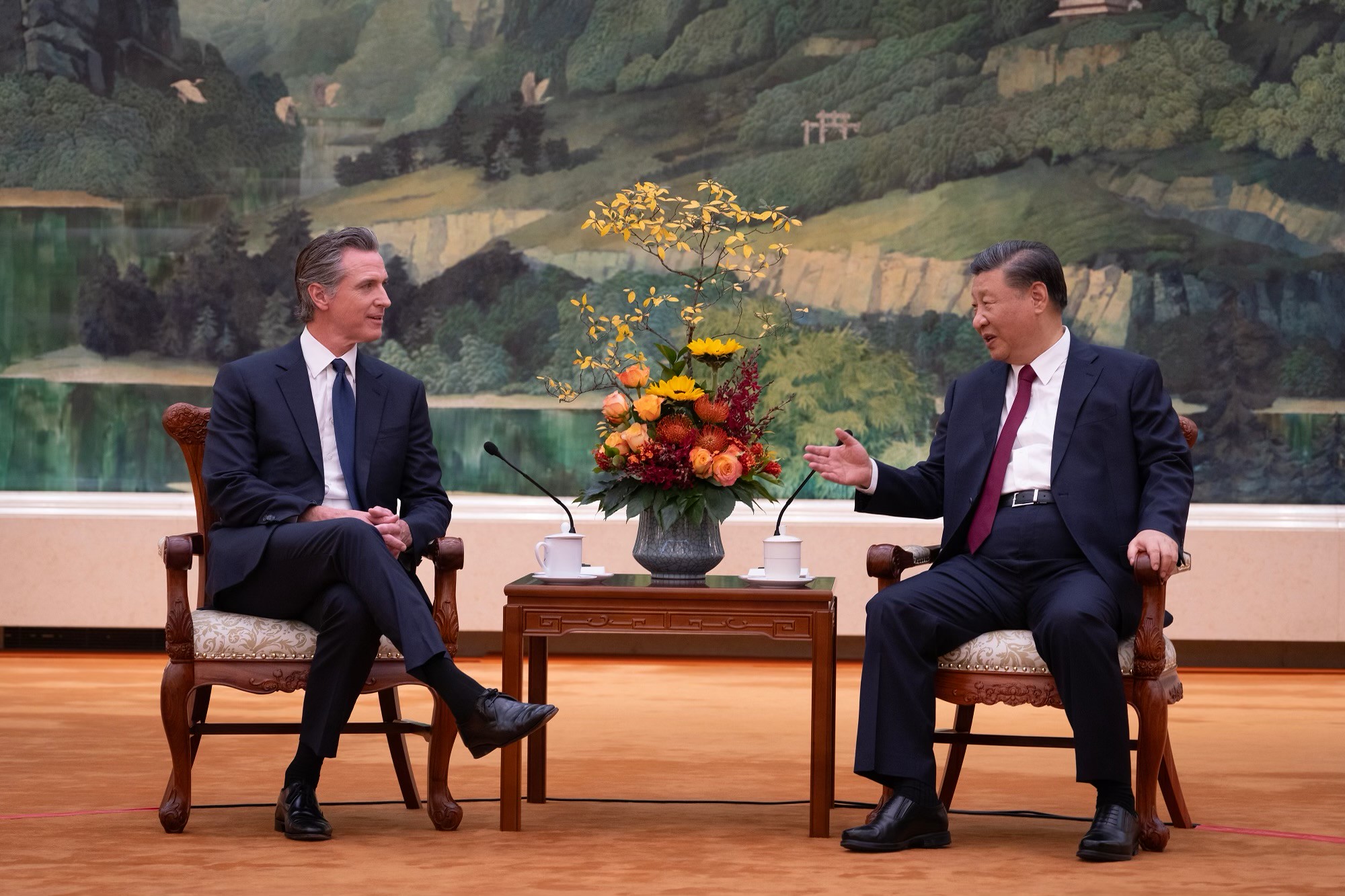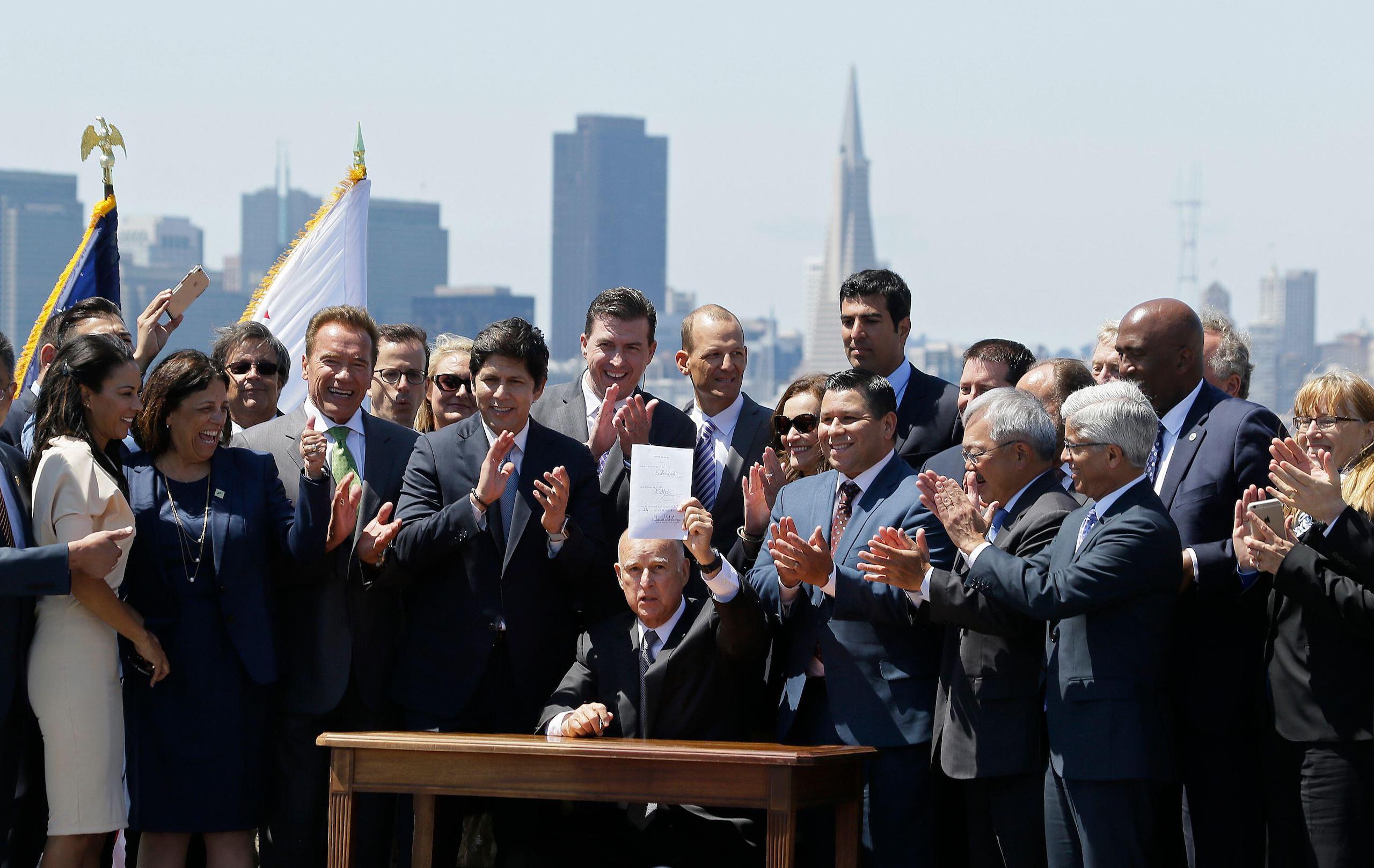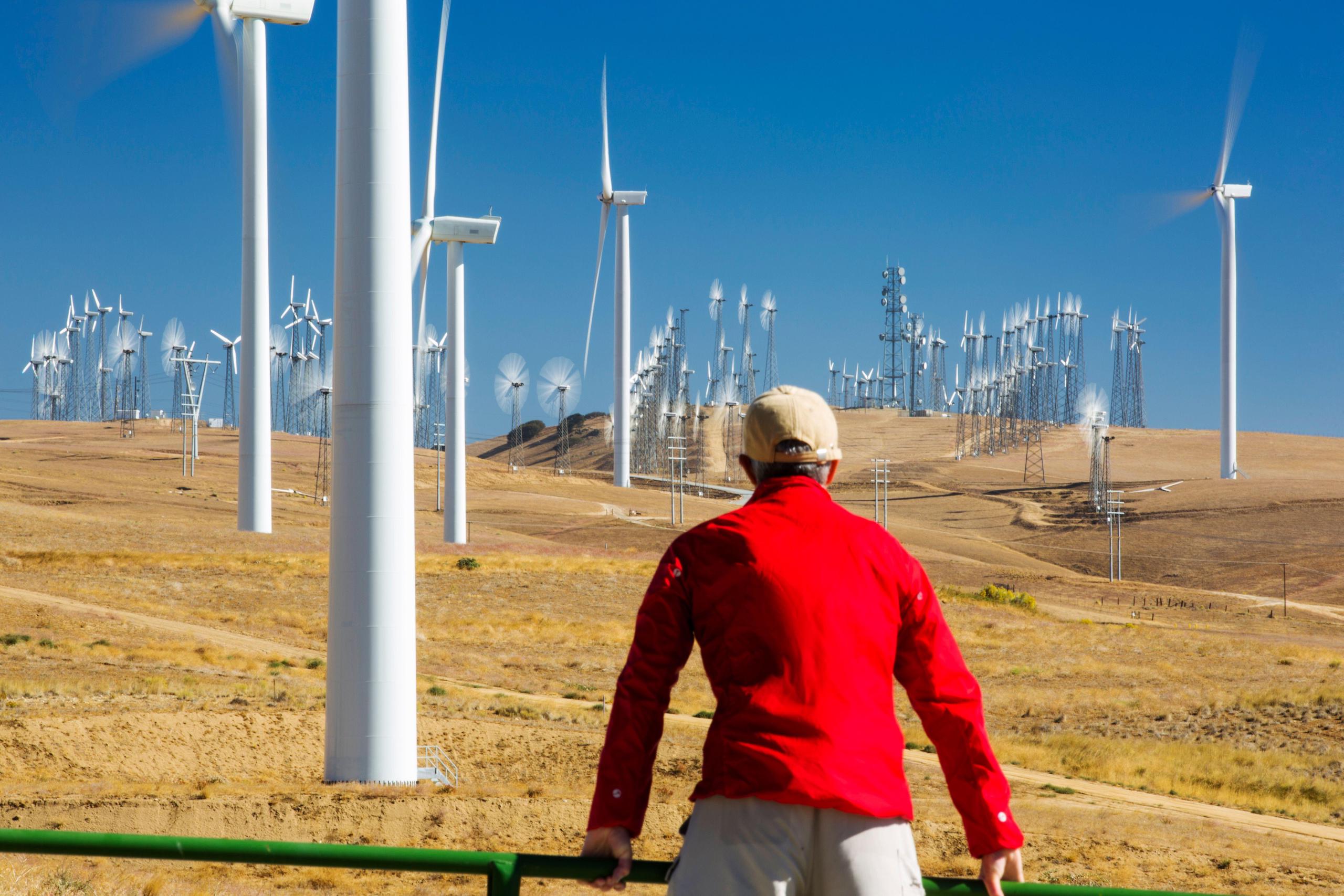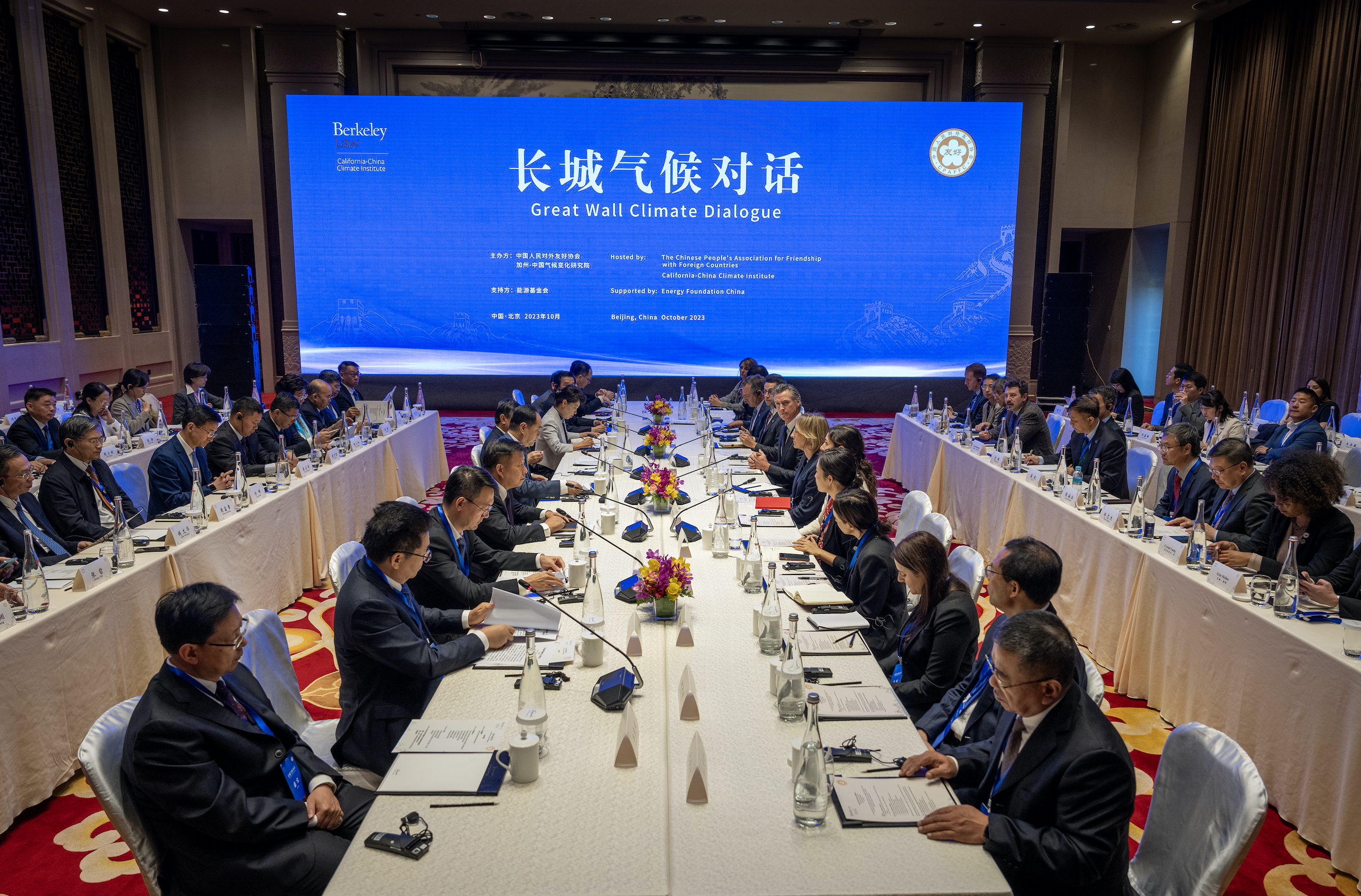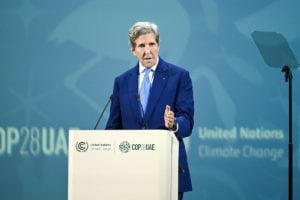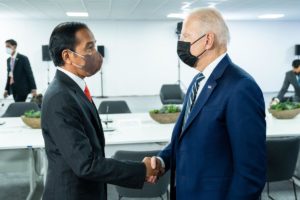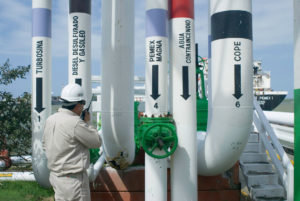Climate diplomacy between China and the US has picked up recently, and California has been at the heart of it.
Last October, California’s state governor, Gavin Newsom, visited China and received a warm reception. Maintaining and strengthening this kind of local-level climate cooperation benefits both relations between the two countries and global climate governance as a whole. These moves should be valued and encouraged.
In early November, Xie Zhenhua, then China’s special envoy on climate change, paid a visit to California, where he met with John Kerry, his US counterpart. On the last day of the meeting, China published its action plan to cut methane emissions. A few days later, the two countries jointly issued the Sunnylands Statement on Enhancing Cooperation to Address the Climate Crisis.
US federal climate policy has been inconsistent, but California has long been at the forefront of those responding proactively to the climate crisis, both domestically and internationally. And despite problems in China–US relations, California has kept working with China on the climate. How has the Golden State achieved this?
Pioneering environmental laws
The Californian government has been legislating on climate change policy and action for two decades.
In 2006, its Global Warming Solutions Act (AB 32) required California to cut greenhouse gas emissions to 1990 levels by 2020. It was the world’s first law to use both regulation and market mechanisms to tackle climate change.
Despite being met with fierce opposition from conservatives demanding less regulation in the name of economic growth, the state hit the target four years ahead of schedule. And while this achievement saw emissions fall by 13% in 12 years, the economy still grew by 26%. It was an encouraging outcome.
In 2016, the original law was expanded to include the aim of reducing emissions in the state by 40% by 2030, and 80% by 2050, also using the 1990 baseline.
In 2017, then-governor Jerry Brown signed a follow-up to the two earlier laws, AB 398. This extended California’s emissions-trading system, which is designed to cut emissions, to 2030.
It is worth noting that while the original 2006 bill received only one Republican vote, AB 398 received nine – these laws have not only provided the legislative backing for California’s fight against climate change, but they have helped to establish climate action in the state’s political ecosystem.
Executive orders
Another legislative approach the state government has used is executive orders. These have made both policy and action more reliable and effective, particularly in the buildings and transportation sectors. Four of the most important such orders are as follows.
In 2012, Governor Brown signed B-18-12, which instructed state government agencies to make 50% of the square footage of existing state-owned buildings carbon-neutral by 2025. It also required new government offices over a certain size to use on-site clean energy such as solar and wind power.
The year 2018 saw a broader order, B-55-18, that California become carbon neutral by 2045.
In the same year, a new building code was published, to take effect in 2020, with stricter requirements on insulation, windows, and rooftop solar. These stipulations would reduce energy use in single-family homes by 53% compared to the previous code’s, stated the Natural Resources Defense Council.
Meanwhile, B-16-12 instructed the state to work with the private sector to put five million zero-emission vehicles on the road by 2030, and construct 200 hydrogen fuelling stations and 250,000 zero-emission vehicle chargers.
Targets and standards
The setting of targets and standards designed to reduce emissions has also been very important, and again California leads the US in this field.
The most prominent example is vehicles. In April 2009, the state approved the US’s first low-carbon fuel standard, to come into effect in 2011. It aimed to reduce the carbon intensity of fuels used in California’s passenger vehicles by 10% by 2020, and by 20% by 2030, as well as to provide more low-carbon alternatives to petroleum fuel.
In 2012, Governor Brown set another ambitious target: California would aim for 1.5 million zero-emission vehicles (ZEVs) on the roads by 2025. The target was hit in April last year, two years ahead of schedule.
Governor Brown’s B-55-18 executive order (that California be carbon neutral by 2045) also included a target to reduce petroleum use in transportation by 45% by 2030, and for the state to use 100% clean energy by 2045.
Targets and standards set in California often end up being adopted elsewhere in the US, and even influencing federal standards: in March 2023, the states of Massachusetts, New Jersey, New York, Oregon, Washington and Maryland all committed to the end of internal combustion engine vehicle sales by 2035, after California had made the same commitment the year before.
In August 2019, California’s governor, attorney general and Air Resources Board even sued the Donald Trump administration over its rules for clean-power generation, as the state already had much higher standards in place. That was the 55th time California had sued the Trump government.
Working together
California is also good at using the market, NGOs, and alliances with the governments of other states to help in its fight against climate change. Its cap-and-trade emissions-trading system (ETS) is a key part of this climate action. The system consists of a cap on total permitted carbon emissions, and tradeable emissions allowances for 330 entities.
According to the International Carbon Action Partnership’s 2022 status report on worldwide emissions trading, California’s ETS accounts for 74% of its greenhouse gas emissions, covering electricity, construction, metals, petroleum, and transportation. It provides support for environmental protection and flexibility for emitters to set their own emissions-reduction pathways, and is regularly updated.
The report lists several major changes made by California to its ETS in 2021, including: the introduction of an absolute price cap, reduction of the use of carbon-offset credits, and a steeper allowance cap decline to 2030. In 2021, California’s ETS generated additional government revenue of US$3.9 billion, the report states.
When the Trump administration announced its withdrawal from the Paris Agreement in 2017, California’s governor Jerry Brown joined forces with governors Andrew Cuomo of New York and Jay Inslee of Washington to form a bipartisan alliance to tackle climate change at the state level.
In that same year, Brown joined with former New York mayor Michael Bloomberg to issue “America’s Pledge”, a commitment to compile and quantify state, city and business actions to reduce emissions in line with the Paris Agreement. In the autumn of 2018, as the Trump administration was taking huge steps backwards on climate issues, California invited global leaders to the first climate summit held by a US state – in clear opposition to Trump’s path.
California works with a range of initiatives and organisations, such as Stanford University’s Climate and Energy Policy Program, and the University of California Berkeley’s Center for Law, Energy & the Environment. These provide scientific understanding and policy suggestions, and help assess impacts and outcomes. It also works with the biggest US tech firms; Facebook, Google and Microsoft have given full support for the state’s stance and measures on climate change.
Non-profits and businesses also help oversee California’s climate change policies. For example, Mary Creasman, CEO of the California Environmental Voters, complained in 2019 that the state was doing nowhere near enough to reduce pollution and halt global warming California Environmental Voters graded the state’s overall efforts at C-minus (71%), the governor was awarded a B, and legislators also rated poorly.
A state of inspiration
Mary Nichols, former chair of the state’s Air Resources Board, once pointed out that we should not let “political feasibility constrain our imagination”. Indeed, while China–US relations have hit a rocky patch, climate change remains a point of contact.
In 2017, as the Trump administration went into reverse on US climate policy, Governor Brown travelled to China and said this about climate action: “California’s leading. China’s leading. It’s true I didn’t come to Washington. I came to Beijing.” In October 2023, Governor Newsom’s office said: “The Governor’s message in China will be simple: the world’s fate depends on climate action in California and China.”
Governor Newsom is not a diplomatic envoy, but there’s no doubt his team was doing diplomatic work. His senior climate advisor, Lauren Sanchez, was formerly a senior advisor to John Kerry, President Biden’s current climate envoy. She also served as a US state department negotiator during the Paris climate talks of 2015.
Bilateral climate cooperation is of enormous significance and value for both California and China. And California is pulling its weight.
Primarily, California provides real-world proof that emissions reductions can happen in tandem with economic growth. This means China should stick to its low-carbon stance while developing its economy – and be wary of giving high-carbon projects the go-ahead.
Secondly, it is increasing understanding of climate change. California’s leading role on the issue is tied up with the awareness of its decision-makers – particularly members of the state assembly and senate, and the governor. They understand that climate change is happening, that it is caused by humans burning fossil fuels, and that it is having catastrophic consequences. But they also believe they can influence this process. That is the foundation for California’s sustained efforts to tackle the problem and a major reason why it has become both a national and international leader on climate change.
Finally, California has been able to stick to its climate action guns. This was particularly true during the Trump administration, when it repeatedly and openly opposed the president and his administration. This highlights the autonomy that states enjoy in the US federal system. California has been able to resist federal influence, and even oppose it and stick to its own agenda. It shows that the determination to tackle climate change exists at all levels of the state government.
EVs and other areas for California–China climate cooperation
The world cannot respond effectively to climate change if China and the US do not work together. Greenhouse gas emissions from the two countries account for 40% of the global total; California itself contributes 6% of US energy-related CO2 emissions. The two-way trade relationship between China and California is worth $166 billion, and China is the state’s biggest trading partner. Newsom’s recent visit continues a tradition of cooperation stretching back more than 15 years, to the time of governors Schwarzenegger and Brown. This tradition benefits climate cooperation both between China and California, and China and the US.
When meeting with Governor Newsom, China’s president, Xi Jinping, said: “The sound development of China–US relations requires pooling the strength of all sides. The foundation and hope of China–US relations lies with the people, the future lies with the youth, and the vitality lies with sub-national entities.” As such, continuing to vigorously implement the Sunnylands Statement will provide new opportunities for cooperation between government of all levels in China, California and the US.
The focus of Governor Newsom’s trip last October was electric vehicles (EVs), high-speed rail and offshore wind power.
EVs look set to be the key field for future cooperation. According to the International Energy Agency’s Global EV Outlook 2023, China dominated global EV sales in 2022 with 60% of the market, and California continued to have more EVs on its roads than any other US state. In the same year, the Global EV Outlook shows, 10 million EVs were sold worldwide; 6.9 million of those were bought in China, and 346,000 were bought in California. And both China and California aim to see the number of EVs increase significantly in the near-term. As mentioned, California plans to have five million ZEVs on the roads by 2030. China, meanwhile, aims to have sold seven million EVs by 2025.
California’s experiences and successes in carbon markets can also help inform China’s ongoing improvements to its own. Both those carbon markets aim to encourage investment in renewable and clean energy, and finding new opportunities for cooperation there will be a powerful rebuttal to talk of a China–US decoupling.
